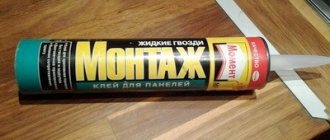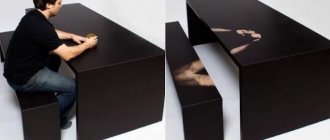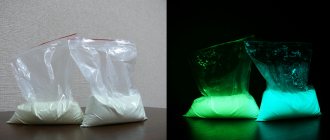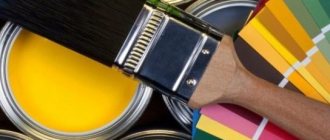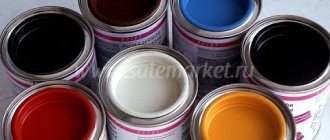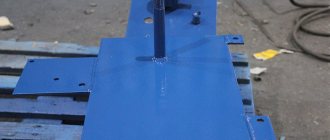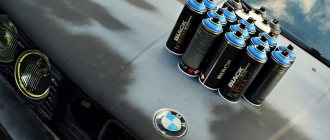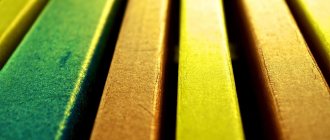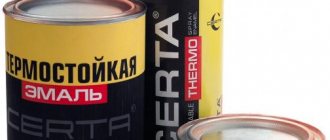What is liquid thermal insulation
Let me start with the fact that the development of this product has been carried out since the seventies in the military space industry of both our country and America. A lightweight material was required, but with unique heat-insulating properties. Today, all advanced technologies have migrated into our everyday lives precisely from the military industry. And warm paint in this case is no exception. Now all the best is for peaceful purposes.
Insulation paint is a polymer binder made of acrylic or latex. It also contains fillers made from the smallest ceramic, glass or polymer beads and various additives that determine different areas of application. In a word, this is a complex chemical compound, the development of which took a lot of time and money.
How does modern insulation paint work?
Due to its unique properties, liquid insulation already begins to work at a thickness of 1 mm. This breaks the whole stereotype in our usual insulation. After all, we are used to the more the better. In this case, no more is needed. 1 millimeter of heat-insulating paint is approximately equal in thermal insulation to 5 cm of mineral wool insulation. Agree, this is a worthy indicator.
Once upon a time, while studying at school, we were taught that vacuum is the best insulator. Sound, heat, and electricity do not travel through it. This explains the phenomenal effect of using heat paint. Since there is a vacuum in the microscopic ceramic balls, the result is a kind of mini-thermos, of which there are millions, and maybe billions.
Due to such a complex molecular structure, thermal energy is reflected. All three types of heat transfer, namely convection, conduction and radiation, are almost completely reflected. The protected surface always remains pleasantly warm.
Thermal insulating paint for walls: composition and scope of application
The composition of paints for thermal insulation is a mixture of:
- fillers;
- evacuated glass beads;
- water;
- acrylic-based dispersions;
- fiberglass;
- foam glass;
- perlite (in expensive types, perlite is replaced with ceramic microspheres).
Scope of material application:
- facades;
- pipes, including heating mains, water supply, gas;
- heating boilers;
- insulation of tanks and industrial equipment;
- walls in the apartment;
- basements.
The paint is applied in a relatively thick layer (4 mm), and therefore its use can replace several millimeters of external insulation or serve as an additional heat preservation system.
The condition for the thermal insulation function is an even layer around the perimeter, and therefore it is better to use a spray gun to evenly distribute the viscous consistency
Functional Features
The quality of thermal protection of thermal paint directly depends on the applied layer and the number of stains. However, it is also not recommended to apply an excessively thick layer; the best option is 2-4 paintings, no more than 6 mm thick. The number of layers depends on the type of heat-insulating liquid material, as well as on the type of surface to be applied. The service life is 12-40 years, and the temperature characteristics are -70°C, +260°C.
Main advantages
The main advantage of liquid insulation for work inside buildings is thermal insulation without reducing space. It is important to note the material’s resistance to temperature changes, which occurs in winter during the heating season: it’s minus outside and plus inside, condensation collects, which forms a favorable environment for the development of fungus. Additional benefits:
- environmental friendliness - the paint does not emit harmful toxic compounds at high temperatures and does not react with other building materials;
- saving on heat bills due to thermal insulation;
- strengthening treated surfaces.
Paint components
Energy-saving facade paint consists of two main components, which provide the unique properties of the material:
- polymer;
- special powdery spheres.
The size of each sphere is different and ranges from ten to two hundred microns.
The percentage of spheres in the paint directly determines its characteristics. That is, the more spheres, the more effective the coating and the more reliably it protects the room from the penetration of cold into the building .
The essence of the operation of such a coating lies in the unique principle of heat accumulation, which is then returned inside the room.
Operating principle of energy-saving coating
Note! To protect boiler equipment, air ducts and chimneys from the influence of high temperatures, fire-retardant metal paints Polistil are used.
In the photo - coating in a boiler room using fire retardant paint
Distinctive characteristics and properties of thermal insulation paint
Ease of application is a big plus. Thermal insulating paint can be applied in a variety of ways, including roller or spray. When the area to be treated is large, a spray gun will be more useful.
Akterm is a liquid thermal insulation similar to paint. This is a practical consistency suitable for various types of surfaces. With prolonged exposure to air (about 24 hours), the mixture polymerizes. So it becomes a thermal barrier. In summer, thermal paint reflects 95% of the sun's rays. And in the winter months, on the contrary, they return (this volume will be about 70%). AKTERM does not require special conditions for application. So, a temperature of at least 20 degrees C is sufficient. And during operation, the product will withstand up to -60°C. And if the surface with paint becomes dirty, it can be easily washed, and it will again become not only functional, but also aesthetic.
Today, energy-saving technologies are becoming increasingly relevant as a construction issue. The modern market offers consumers innovative developments in this area, embodied in high-quality universal materials. They are designed to provide maximum protection of the home from adverse natural factors and proper thermal insulation of the premises.
Thermal insulating paint is a new product on the building materials market. Its purpose is to reduce heat loss in a building, in particular in a house. Having a liquid consistency, the material is easily applied to any type of surface, even deformed. The material is completely safe for human health and the environment, being a composite thermal paint, which includes a polymer matrix and a filler - hollow microspheres.
The range of properties of heat-insulating paint is very wide:
- Prevents cold from penetrating into the room
- Prevents corrosion on metal surfaces
- Excellent heat retention
- Prevents moisture from entering, eliminates mold
- Eliminates condensation
- Saves electrical energy
The thinnest layer of insulating paint can completely replace the traditional thermal insulation system of a house. Liquid insulation has a very reasonable cost and efficiency, which is also one of the factors in favor of its choice.
Distinctive features of thermal insulation compounds
Thermal insulation composition is a unique product. It acts like insulation and is applied like regular paint. Such products help prevent heat loss by creating a thermal insulation layer that will last more than 10 years. Paint also protects the surface from moisture penetration and mold development, and metal from corrosion.
The color of the coating is usually white. Thermal insulation paint is diluted, depending on the composition, with water, solvent, toluene or xylene. Available in plastic containers with a volume of 3...10-20 liters.
There are several types of such products. They differ in their constituent components. Any thermal insulation paint contains a base (water-based or acrylate), a filler (fiberglass, perlite, foam glass or ceramic microspheres), as well as additives that improve the elasticity and water resistance of the product. The combination of all these components makes the coating stretchable, light and flexible.
The paint adheres to almost any surface. Apply to the base using a spray gun, roller or brush. After drying, an elastic polymer coating with high thermal insulation and anti-corrosion characteristics is formed on the surface. Just a few millimeters of such a layer provide a level of thermal insulation equivalent to laying one and a half bricks.
Advantages and disadvantages
applied in a thin layer (0.5 mm), creates minimal load on the base; sticks to any base (metal, concrete, brick, stone, wood, plastic); there is no creeping effect; creates a moisture-proof coating; protects against corrosion; ignites only at very high temperatures; prevents heat loss by 30-40%; the coating does not lose properties at low or high temperatures; protective properties last for more than 10 years.
takes a long time to dry (24 hours); high consumption (per square meter of area - 0.5 liters of solution); high price.
How to choose?
When choosing a thermal insulation material, it is important to consider the location of the painting work (indoors or outdoors) as well as the type of surface being treated. Before purchasing thermal paint, it is also advisable to familiarize yourself with the list of popular manufacturers and study reviews of their products.
Some recommendations for selection:
- for exterior work, you should select paint with high levels of water resistance and heat resistance;
- for indoor work, you need to purchase paint that does not contain toxic substances;
- the mixture for painting gas and water pipes must have the highest heat resistance.
It is worth remembering that when painting, quite a lot of heat-insulating composition is consumed. Before purchasing a suitable liquid insulation, it is important to calculate in advance the required amount of mixture.
When calculating, the following factors must be taken into account:
- Surface area to be painted.
- The type of material that will be coated with paint and varnish. To cover a wooden, brick or concrete surface, paint overconsumption can range from five to ten percent. Painting the metal may require an additional three to six percent of the mixture.
- Presence of defects on the surface. If there are small cracks or irregularities, it is worth considering that painting such areas will require an additional amount of liquid heat insulator. Overconsumption of the mixture can reach forty percent.
- The number and thickness of paint layers you plan to apply to the surface. Recommended coating thickness for different materials:
- For concrete - one and a half millimeters.
- For wood - two millimeters.
- For metal, brick, cellular concrete and expanded clay concrete - two and a half millimeters.
To calculate the approximate amount of paint, you need to multiply the surface area, the consumption rate (liter/sq. m) and the number of intended layers.
Thermal insulation of premises
Free consultation with a specialist by phone +7 (495) 532-14-64
AKTERM thermal paints are modern thermal insulation materials, the use of which helps prevent freezing of walls in residential premises, buildings and structures. In terms of its thermophysical properties, the material is superior to all existing analogues; it can be applied to brick, concrete surfaces, wood, plasterboard, foam block, expanded clay block. AKTERM products and production are certified, have a European standard certificate, and also have a full package of documentation confirming its quality and safety.
Varieties
The type of warm paint is conventionally divided according to two characteristics:
- composition: acrylic or water base;
- by area of application: for indoor work, for pipes, facade - exclusively for outdoor work.
Thermal insulation paints for interior work
For work inside buildings, both acrylic and water-based compositions are suitable. An important task is to determine the functional load, as well as study the composition, which should not contain toxic components. To treat pipes, heating mains, and gas pipelines indoors, use interior paint, preferably acrylic-based, and for painting cold walls, you can use a water-based composition.
Insulating paints for exterior work
For outside work, it is necessary to select thermal insulation materials taking into account the functional characteristics of the surface and environmental conditions (humidity, frost, sunny side). It is better to choose a mixture with minimal water resistance and the highest vapor permeability, so that heat will be retained and the treated surfaces will not deteriorate.
Basic recommendations for selection
Thermal paints are available on the market for various surfaces and conditions of use. Therefore, when purchasing, you need to consider the following parameters:
- For what purposes is such thermal insulation needed ? This includes what material the surface that needs insulation is made of (brick, wood, metal, concrete) and the area of insulation. The main required characteristics of thermal paint: fire resistance, heat resistance, high vapor permeability, anti-corrosion properties. But you need to consider where the insulation will be done. If indoors, it is important to select appropriate formulations without harmful components.
- What areas are supposed to be painted and in what way . If you use a brush or roller for painting, you need to understand that they consume more material than a spray gun. In addition, they lay thermal insulation in a less uniform layer, but are cheaper and are quite suitable for small areas.
- Select color . In most cases, the color of the thermal paint is white or gray, but some manufacturers offer ready-made paints in different colors. And sometimes colors are added at the client’s request without losing the original characteristics.
Another aspect worth paying attention to is the choice of original. If you take products in branded stores, then the risk of taking a useless counterfeit is small, but on the market you need to carefully study the documentation and packaging. If something suddenly alarms you, then you should refuse the purchase. Sellers in such places may not even know that they are selling non-original paints. Foreign expensive compounds are often counterfeited, but there are also counterfeits among domestic products.
Manufacturers
In order not to make a mistake in choosing a high-quality thermal insulation coating, it is better to purchase products from well-known and trusted manufacturers. Among Russian manufacturers of thermal insulation paints, four leading ones can be identified:
One of the most popular manufacturers of thermal insulation mixtures is.
Liquid heat insulators from this company can be used to treat the following surfaces:
- metal containers;
- rooms with high humidity levels;
- boiler rooms;
- facade of buildings;
- surfaces inside residential and administrative buildings;
- chimneys;
- motor transport, passenger aircraft, railway cars;
- pipelines.
produces several types of paints and varnishes, depending on their scope of application. The following modifications of Korund products are produced:
- "Classic". A universal coloring composition that is suitable for external and internal work. Widely used in building construction.
- "Facade". This heat insulator is designed for treating concrete walls. Painting can be done both outside and inside the room. The material has a high level of waterproofness and heat permeability. The coating protects the walls from overheating in the warm season and from freezing in the cold season.
- "Lotus". It has the same qualities as the “Facade” modification. This material is intended for application to the surface in the form of a final layer.
- "Winter". A distinctive feature of this modification is that the dyeing procedure can be performed at sub-zero temperatures. You can work with such material at temperatures not lower than -10 degrees.
- "Anticor". Used for painting metal surfaces. This paint and varnish material protects the metal from atmospheric influences and prevents corrosion.
"Termalcom"
produces a line of heat-insulating paints "Astratek". The paint and varnish coating is made on the basis of polymers. offers products with high performance characteristics at reasonable prices.
Liquid thermal insulation "Astratek" is widely used in the construction, industry and housing and communal services sectors. There are six modifications of this company’s thermal paint:
- "Astratek Universal". Suitable for painting all types of surfaces. It has a high level of vapor permeability, which helps prevent the appearance and spread of mold on the surface.
- "Astratek Metal". Used for painting metal structures and devices that are operated in unfavorable conditions of high humidity. Such a coating will increase the service life of products made of ferrous and non-ferrous metals, prevent corrosion and eliminate the formation of condensation.
- "Astratek façade". It is used for thermal insulation of building facades.
- "Astratek NG". It is a special fire-resistant modification of the material.
- "Astratek Universal BC". An all-season coating that is temperature and weather resistant.
- "Astratek decor-acoustic" It is used as additional thermal insulation of walls, and also significantly improves the acoustics in the room.
GC VIRTs "Bronya"
The products are widely used in various fields of construction and industry. The manufacturer offers the best conditions on the thermal paint market in terms of price/quality ratio.
Thermal insulating ceramic paint "Bronya" was previously used mainly for painting gas networks and water supply systems. However, the company regularly expands its line of thermal insulators with new modifications.
Thermal paints are divided into three groups:
- basic modifications;
- budget modifications;
- special modifications.
"Akterm"
is one of the leading manufacturers of liquid thermal insulation. The company independently develops a unique manufacturing technology for its products. In the production of heat-retaining materials, only high-quality raw materials are used.
Liquid thermal insulation currently has fifteen different modifications, differing in composition and properties.
The main functions performed by Akterm thermal insulation coatings are as follows:
- preventing the formation of condensation;
- anti-corrosion protection;
- water protection;
- thermal insulation;
- fire protection
Recommendations for application:
- Before using ultra-thin insulation, it is necessary to prepare the surface to be treated: remove rust, clean from dust and grease, and prime if necessary. It is advisable to apply the paint and varnish composition at a humidity of no more than eighty percent and a temperature of at least seven degrees Celsius.
- When carrying out external painting work, it is better to choose calm weather. Due to wind, paint consumption can increase by up to five percent. The following tools can be used to apply the coloring composition:
- roller;
- spray gun;
- paint brush.
- It will be most convenient to apply the mixture using a spray gun. If the ultra-thin insulating mixture is too thick in consistency, it can be diluted with water. Also, do not forget about using a respirator to protect your respiratory organs.
Selection of thermal paints and main manufacturers
The Russian construction market offers a wide range of liquid heat insulators from various manufacturers; when choosing paint, you need to read the application instructions and compare prices, because the product belongs to the expensive category. You can determine the required amount of material according to the consumption rates indicated on the packaging for various types of surfaces to be treated.
Corundum
The manufacturer produces a wide range of paints, the main brands:
- Classic - used for finishing interior and exterior objects with an operating temperature range from -60C to +250C.
- Facade - provides thermal insulation of the outer surface of buildings, is characterized by good vapor permeability and moisture resistance.
- Anticorrosive - applied to cleaned metal surfaces or with traces of rust, provides high anti-corrosion protection of objects during operation
- Zima is a brand intended for application in cold weather at temperatures down to - 10 C.
The average price of a 10-liter container of all Korund brands is 100 USD.
Fig.8 Thermal insulating paint for pipes - application options
Astratek
Durable paints with a service life of up to 30 years and a temperature of coated surfaces of up to 150 C., the product line consists of several brands of gray and white colors:
- Universal is used for thermal insulation of internal and external walls of buildings; the paint can withstand several freezing cycles and is diluted with water.
- The metal is produced in gray color; during operation, the coating performs anti-corrosion functions and can be used for painting metal objects and roofs of buildings.
- The white facade is used for insulation of facade walls of buildings, has increased water resistance and vapor permeability, the viscous consistency is designed to work with a sprayer or spatula.
Average cost 10 liters. heat paints Asstratek is 110 USD.
Rice. 9 Popular brands of thermal insulation paints
Armor
Liquid thermal insulation Bronya consists of several varieties:
- Classic - performs the functions of a heat insulator in heating and hot water supply systems, and can be used for insulation of chimneys. The paint is not exposed to solar radiation and protects the treated surfaces from corrosion and condensation, thereby extending their service life.
- Anticorrosive - designed to cover rusty metal objects, providing them with further high anti-corrosion protection.
- Winter - additive polymers and foam glass granules are additionally included in the composition, can be used in winter at temperatures up to - 35 C. and is designed for operation in cold weather, has a fairly high price - about 162 USD. for 10 liters.
- Facade - in addition to thermal insulation, it performs protective functions, preventing the formation of condensation, mildew and mold, and has high vapor permeability.
Products under the Bronya brand are among the most budget-friendly (with the exception of Zima), the average price is for 10 liters. is 75 USD
Rice. 10 Liquid thermal protection on the roof
Compared to the use of traditional insulation, thermal paint has higher performance properties; its use allows you to quickly and effectively paint rooms, heating systems, steam pipelines and hot water supply pipelines. It is easy to paint the insulated object with your own hands using a roller or a paint brush; to obtain the desired consistency, the paints are diluted with water.
Efficiency assessment from experts
Liquid insulation today is just gaining the trust of consumers, but there are already opposing opinions about the effectiveness of using “liquid ceramics”. For example, the calculations are given:
- extruded polystyrene foam in fact (50 mm) costs 300 rubles. (sq. m);
- assume thickness 1mm, price per sq. meter - 6 rubles;
- the total cost in equivalent of ultra-thin thermal insulation is 450 rubles/liter;
- With the recommended consumption of thermal paint, its price is for the same 1 sq. m. (thickness 1 mm) when applied in a single layer is 100 times higher than that of expanded polystyrene.
In contrast to such reasoning, other experts give the example that the thermal insulating properties of the extruded polystyrene foam given as an example are at least 50 times lower, and the surface emissivity due to the roughness of the thermal paint is much higher. When treating the surface with “liquid ceramics”, the effect of a “thermal mirror” is obtained. Believing one reasoning or another is an individual matter, but experts agree that there is no alternative to liquid ceramics in hard-to-reach places. It is difficult to imagine insulating with mineral wool under a window sill or in other places, but thermal insulation paint does an excellent job of this task, leaving no seams or bends.
The material's high adhesion helps insulate the surface from moisture, water and cold air, eliminating the potential for external corrosion and rust formation.
Properties and advantages of paints for thermal insulation
Numerous manufacturers claim the following technological properties of thermal insulation material:
- a 1 mm paint layer replaces a 5 cm thick mineral wool thermal insulation layer;
- the composition has high hydrophobic properties;
- 4-5% of the heat passing through the coatings converts moisture entering from the outside into steam, thereby preventing icing of the surface of the treated structure.
The list of advantages of using thermal paint is significant:
- possibility of use even in hard-to-reach places where the use of traditional materials is not possible;
- convenience and high speed of application of the composition when performing painting work, a roller, brush, or spray can be used;
- if you strictly follow the manufacturer's instructions and comply with the relevant standards, paint for insulating walls and other elements of the building can be applied even by a non-specialist;
- the composition is not subject to rotting, does not burn;
- has excellent adhesion to any material, including concrete, plastic and metal; does not allow condensation to form on the surface; is highly resistant to ultraviolet rays, chemicals, alkalis, and saline solutions;
- if desired, the surface to be painted can be given any color; if the integrity of the coating is damaged, it can be easily restored;
- the composition does not burden the protected structure.
The main advantage of heat-reflecting paint is the uniform distribution of the composition, which makes it possible to insulate relief surfaces.
Despite the obvious advantages, thermal paints also have some disadvantages:
- Before performing work with paint thermal insulation, the surface must be thoroughly cleaned of dirt, it must be degreased and dried;
- when insulating a facade, you should not rely on paint as the only heat-insulating material; it will perfectly perform the function of an additional means, helping to reduce the layer of main thermal insulation;
- the properties and technical characteristics of similar paint compositions from different manufacturers may differ significantly.
The main disadvantage of heat-insulating compositions for both interior and exterior work is the relatively high consumption per square meter of surface.
Thermal insulation paint: buy or use traditional insulation?
Since its inception, liquid thermal insulation has significantly displaced traditional types of insulation in the building materials market. Without being inferior in environmental friendliness, it ensures a reduction in labor costs, consumption of building materials, and has improved characteristics:
- Minimal load on load-bearing structures - a layer of several microns instead of the standard 50 - 20 mm
- Easy to use – painting with a spray gun, roller, brush
- universal in use - treatment of walls, ceilings, the inside of the roof, basements
- Does not require cutting - no trimmings or waste requiring disposal
- Convenient to store and transport - a bucket of paint takes up much less space than a stack of polystyrene foam sheets and can be transported by car or manually
Thermal insulation paint, which you can buy in our store, is available in various packaging, allowing you to choose the right amount to reduce your repair budget. Prices can be viewed on the page of each product.
Fighting condensation with heat paint
Liquid thermal insulation allows you to avoid the manufacture of complex structures necessary for attaching a thermal insulation layer near the roofs of hangars and residential buildings. Painting pipelines of engineering systems is much cheaper than protecting pipelines with polystyrene foam shells, winding with basalt wool, and then waterproofing the insulation.
Condensation control is available to a home craftsman with minimal painting skills. Liquid thermal insulation is sold in convenient buckets and jars, is completely ready for use, and has instructions for use. The weight of the roof practically does not increase when applying a millimeter layer, while the comfort of using the premises increases many times over.
